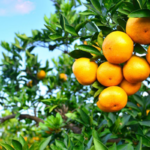Mexican papaya enjoys healthy US demand

The Mexican papaya industry grows at a steady pace. Increased demand from the U.S. market has allowed the country to continue leading exports globally.
In 2022, the United States imported 233,728 tons of fresh papaya, a significant 5.8% increase year-on-year, according to USDA’s Agricultural Market Service data. Mexican supplies accounted for 85% of U.S. papaya imports, with a total of 198,639 tons.
Mexico ships the fruit year-round, with lower volumes from October through December. During the 2021-22 campaign, Mexico produced 1,135,888 tons of papaya. This was up barely 1.7% over 2020 figures, as the sector recovered from pandemic levels.
Oaxaca, Colima, and Chiapas are the top three papaya-producing states with 353,708 (a 31.2% share of total production), 193,773 (17.1%), and 157,957 (13.9%) tons, respectively.
Of the total volume produced, around 16%, was exported, mainly to the United States, according to data by Mexico’s Agri-food and Fishery Information Service (SIAP).
Related articles: How focusing on phytosanitation boosted Mexican papaya
Health benefits
Papayas are known for their sweet flavor and juicy flesh, making them a Mexican staple in breakfast, snacks, and other preparations.
People diagnosed with Type 1 Diabetes can benefit from this fruit’s high fiber content, which can go up to 1,6 ounces per regular-sized papaya.
According to WebMD.com, the papain and chymopapain enzymes in papayas can aid digestion and reduce inflammation. Papain is an ingredient in some over-the-counter supplements to help with minor stomach upset.
They may help ease acute pain, like that from burns or bruises, and might help with chronic inflammatory conditions such as arthritis and asthma.
Additionally, their potassium, and vitamin content can help prevent heart disease. Because of the high vitamin A and C content, papayas can also help boost the immune system.














































